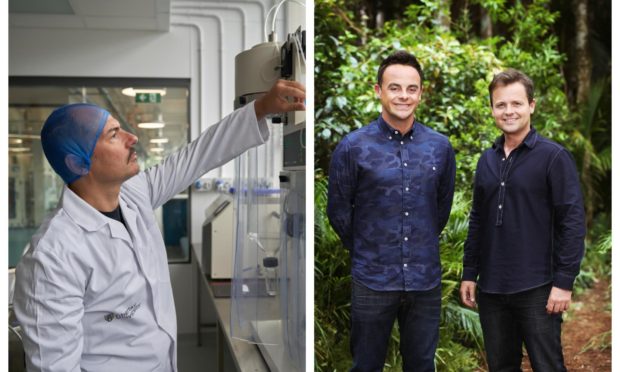Dundee academics hope to create an affordable food source with the help of worms eaten on popular TV show I’m a Celebrity.
Scientists at Abertay University plan to use mopane worms to develop an insect-based porridge to tackle malnutrition in poverty-stricken Zimbabwe.
The insects are best known in the UK for being part of eating challenges in the hit ITV show hosted by comedy duo Ant McPartlin and Declan Donnelly.
In Zimbabwe, they are a commonly farmed delicacy and a valuable source of nutrients.
The £1 million project will modify existing local recipes and upscale traditional rearing techniques used by mopane worm farmers.
It is hoped this will improve the health and nutritional status of primary school children in some of the country’s poorest communities.
Malnutrition
Project lead Dr Alberto Fiore said: “At the moment, maize is a staple food in Zimbabwe and is used in the production of traditional foods for the whole family, including for weaning children.
“This is problematic as it is extremely low in protein, essential minerals, amino acids and fatty acids.
“It also contributes to obesity, which, combined with malnutrition is an inescapable problem right now.”
The innovative project has been made possible through a grant from UK Research and Innovation’s (UKRI) GCRF scheme.
It also involves experts from the University of Sheffield and three universities in Zimbabwe.
Sustainable
Dr Fiore added: “We know through existing research that edible insects are a good source of nutrients and, importantly, they are very affordable.
“We will be using existing techniques on a larger scale, and we hope this will help improve health in school-age children.”
Dr Viren Ranawana, a researcher in the project from the University of Sheffield’s School of Health and Related Research added: “Undernutrition in primary school children is a recognised problem in Zimbabwe, and nutritional inadequacy during this critical developmental stage can have long term negative effects.
“This is why the study is so important, and its strength is that it uses a culturally relevant approach as a solution.
“Mopane worms are a traditional food and an important part of the country’s diet and economy.
“It is also a very sustainable food source that is rich in protein and micronutrients.”










